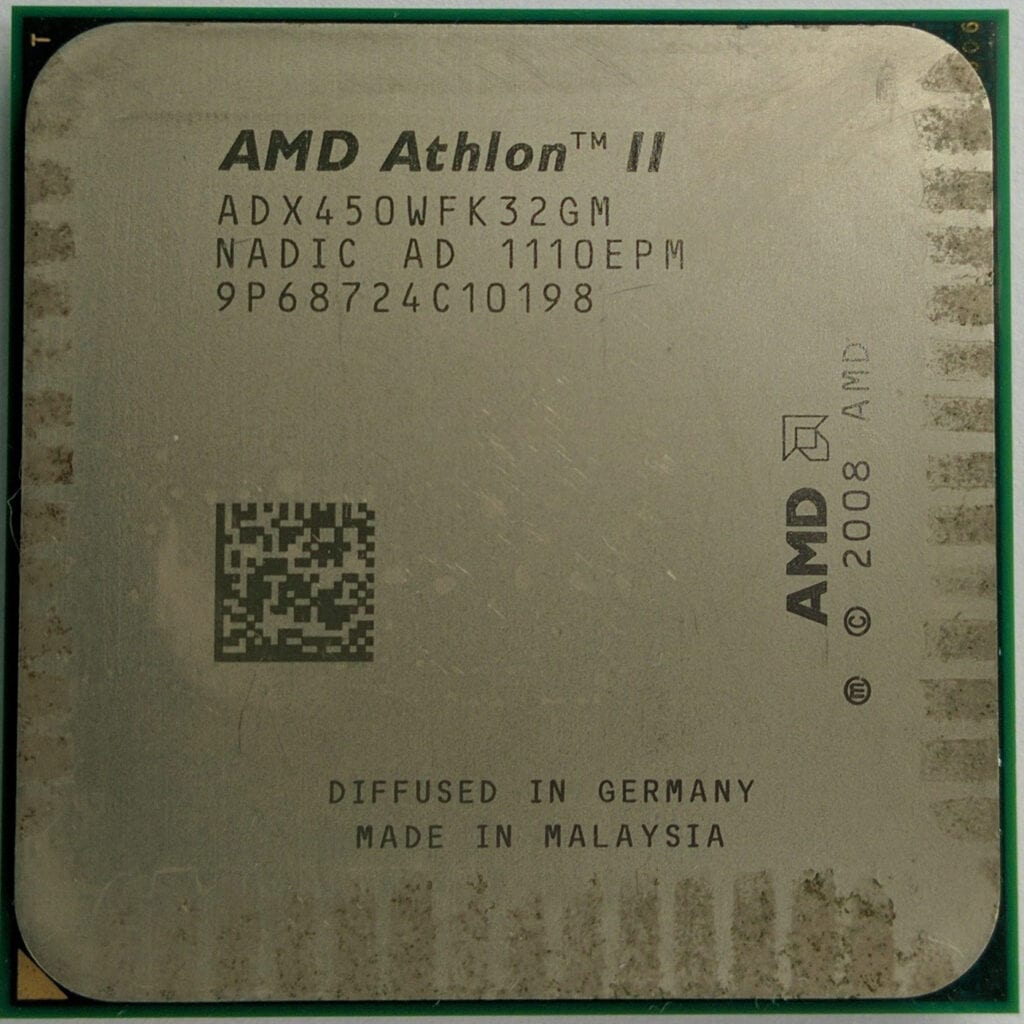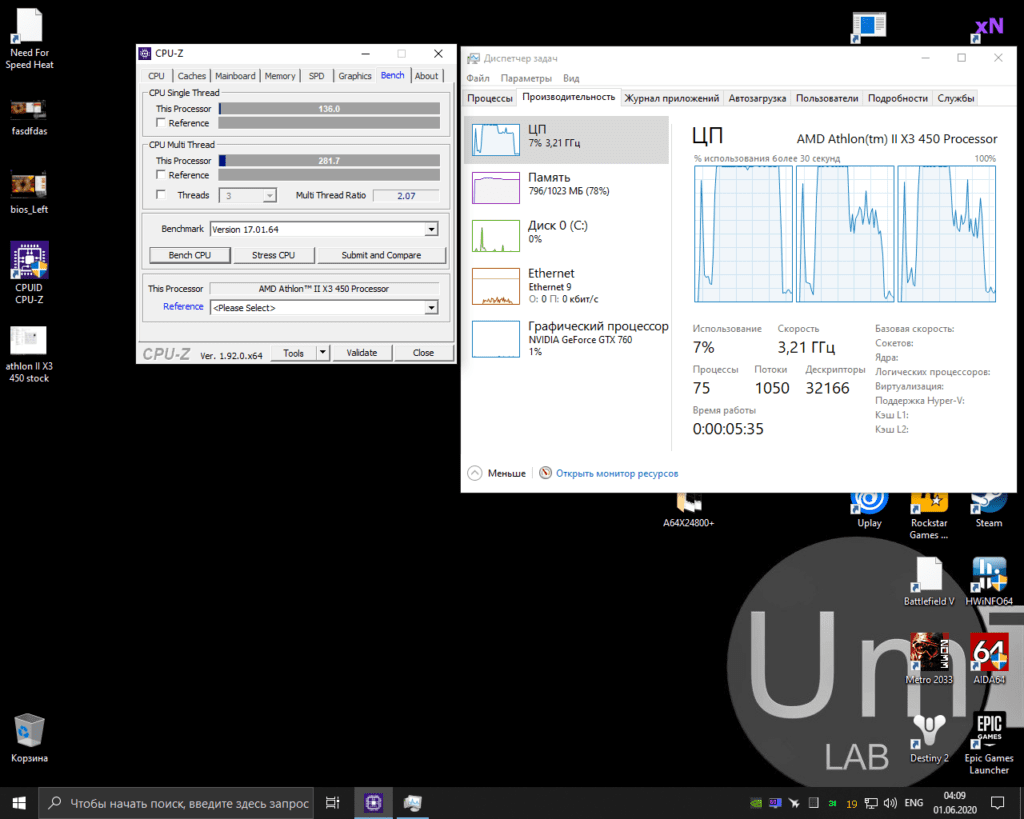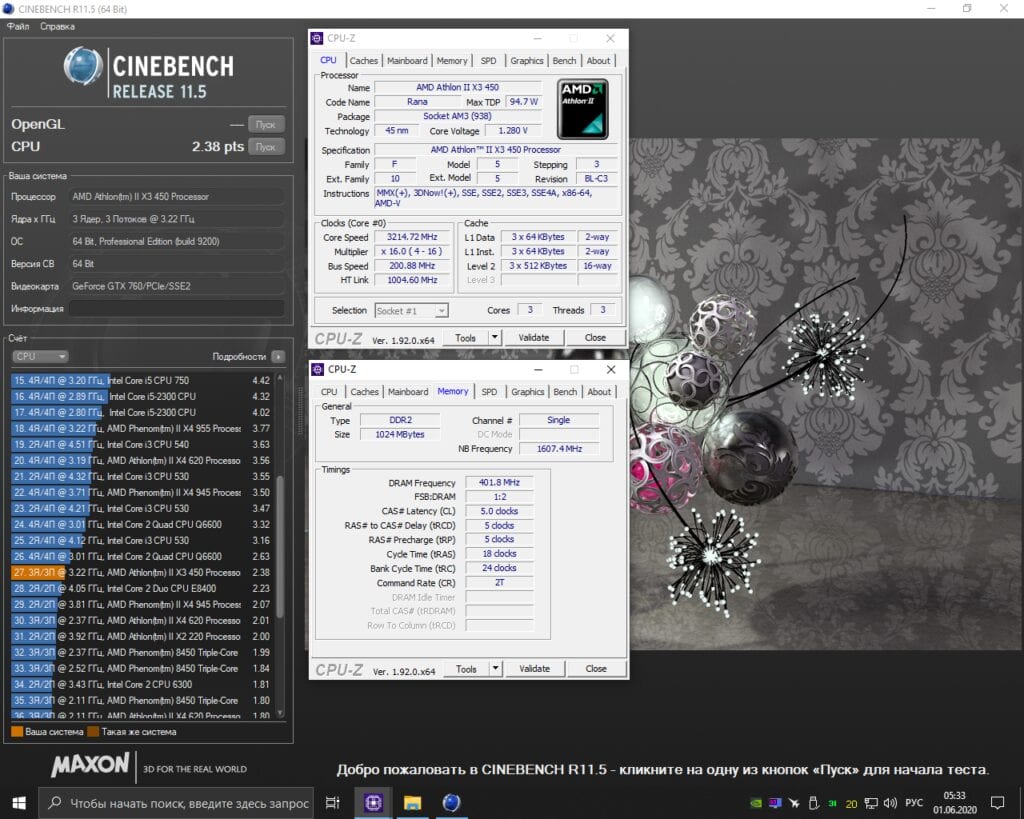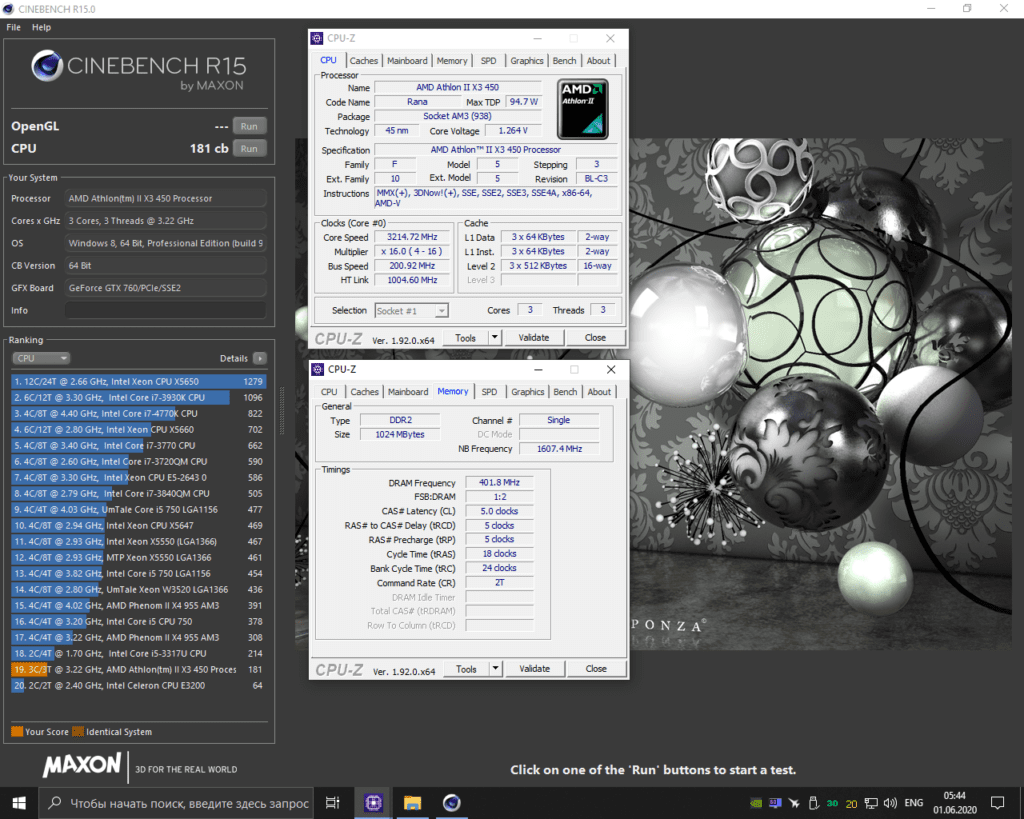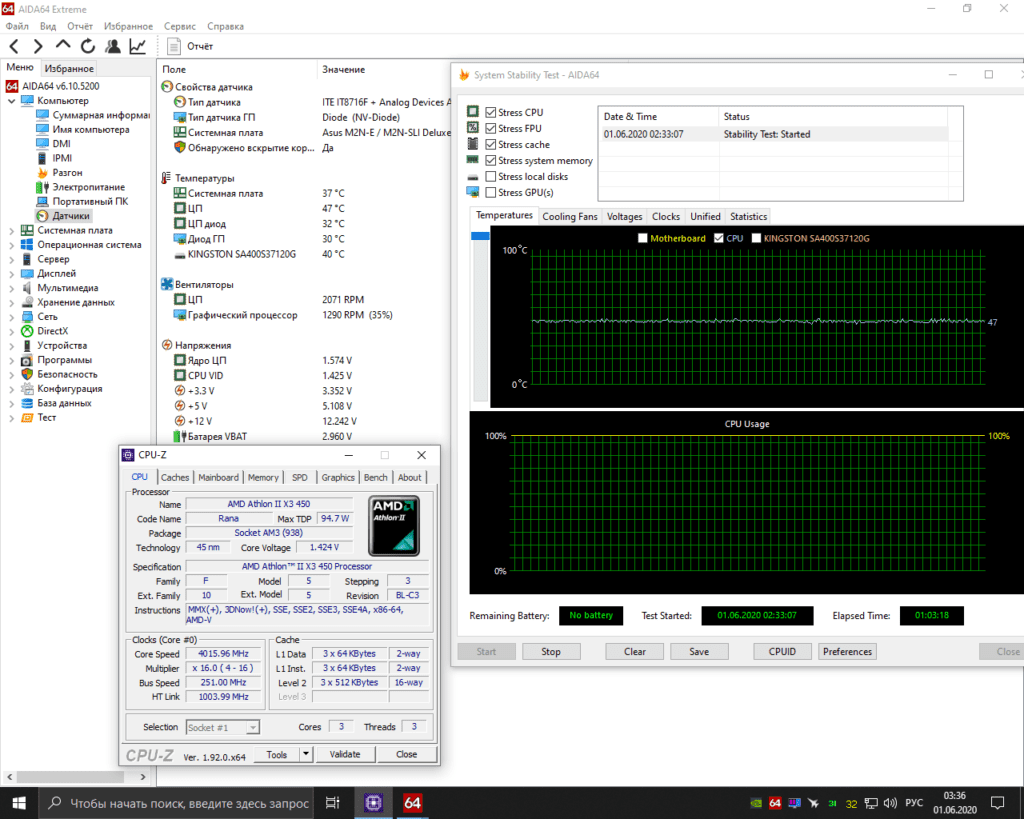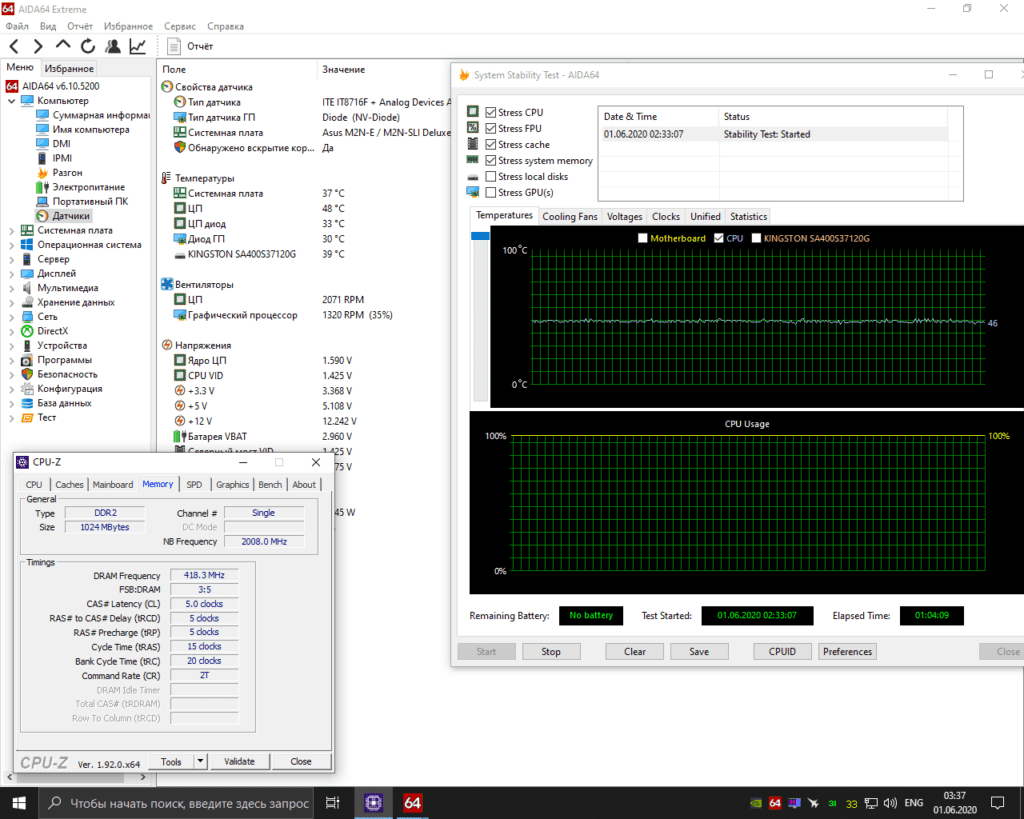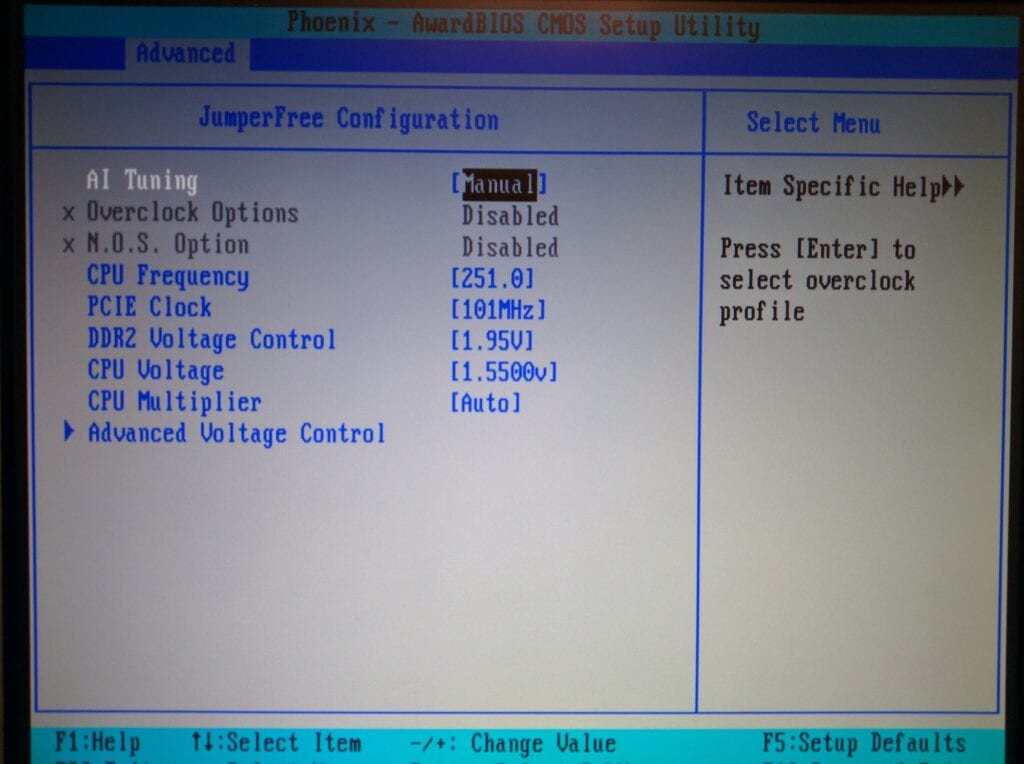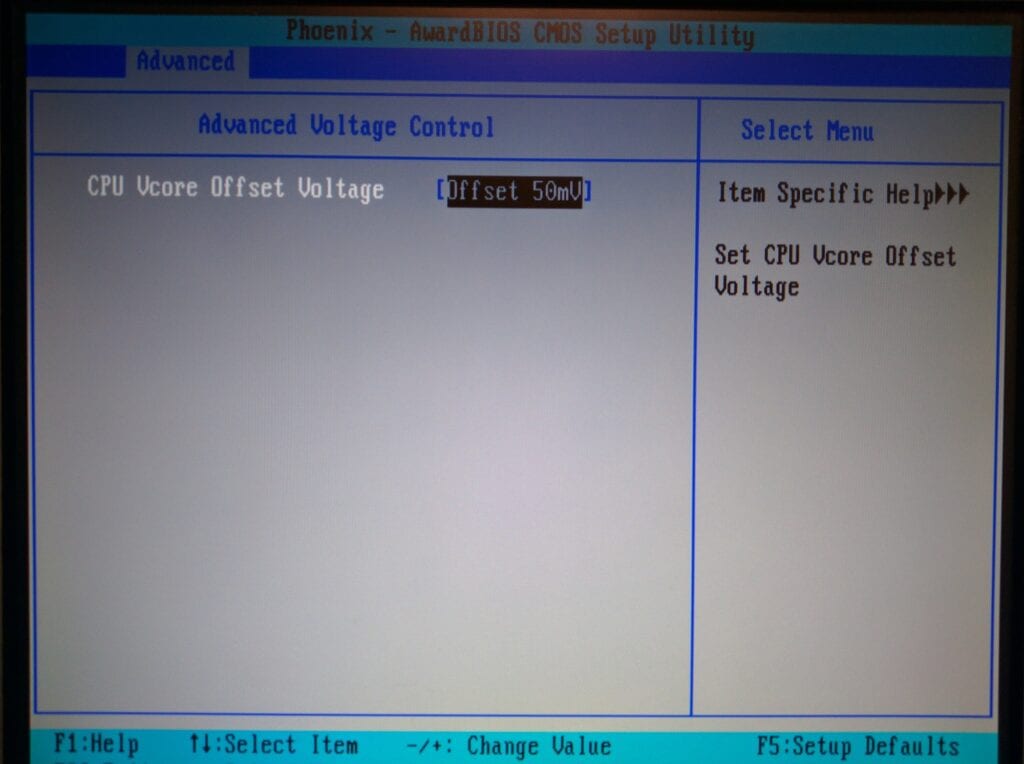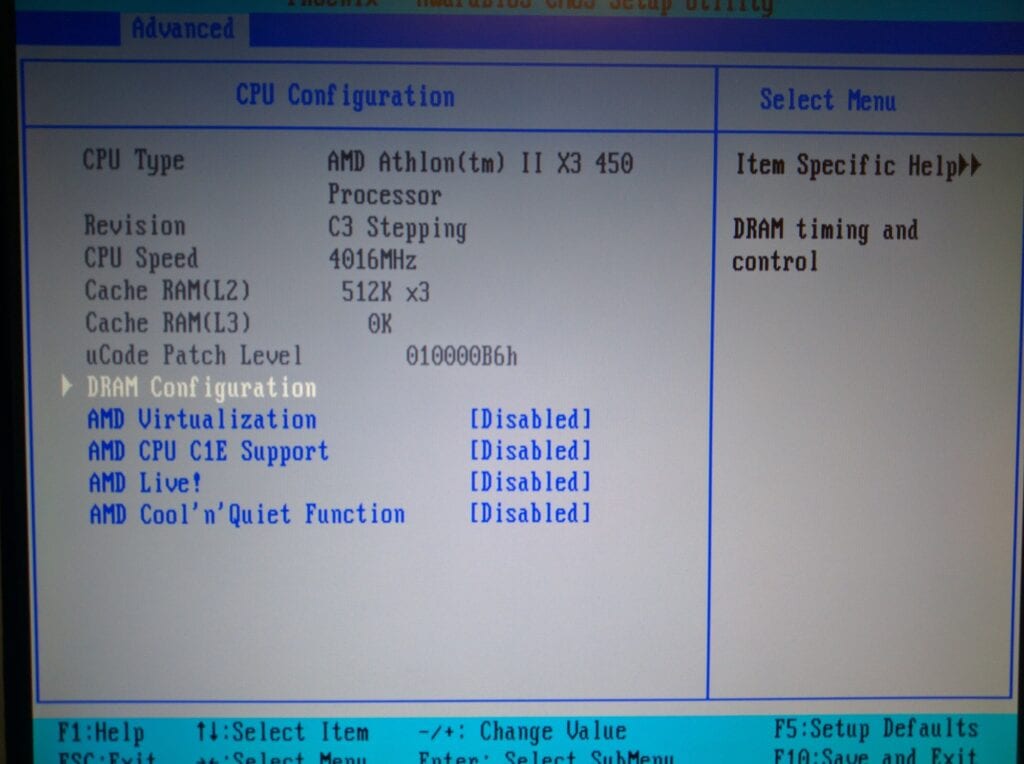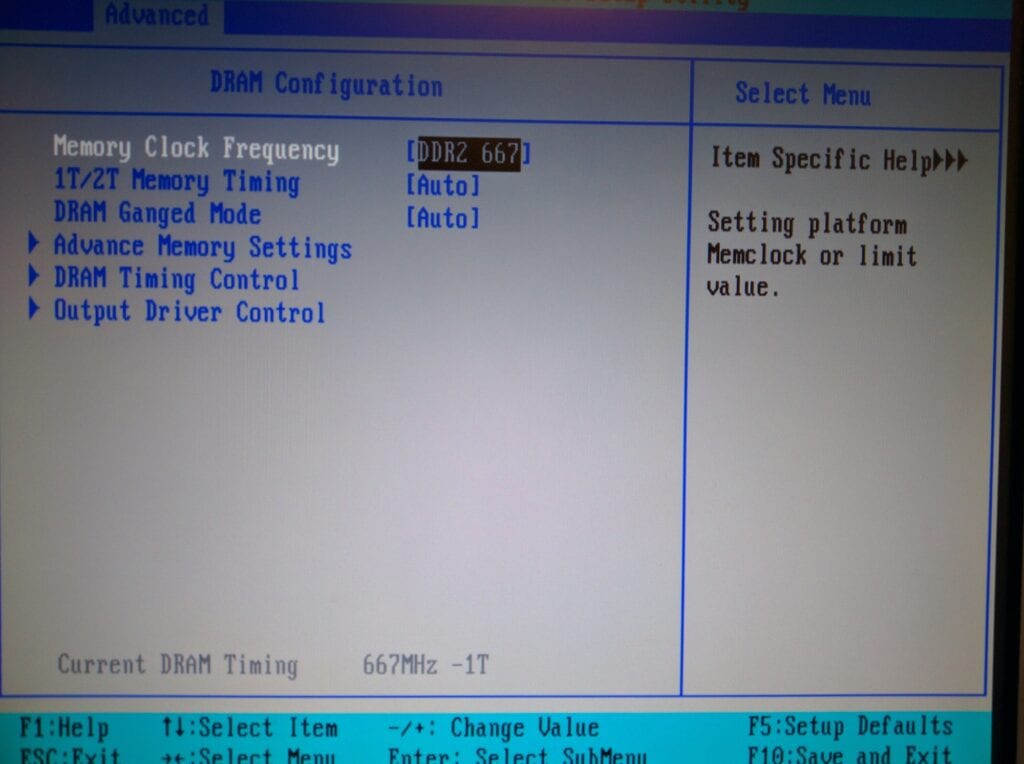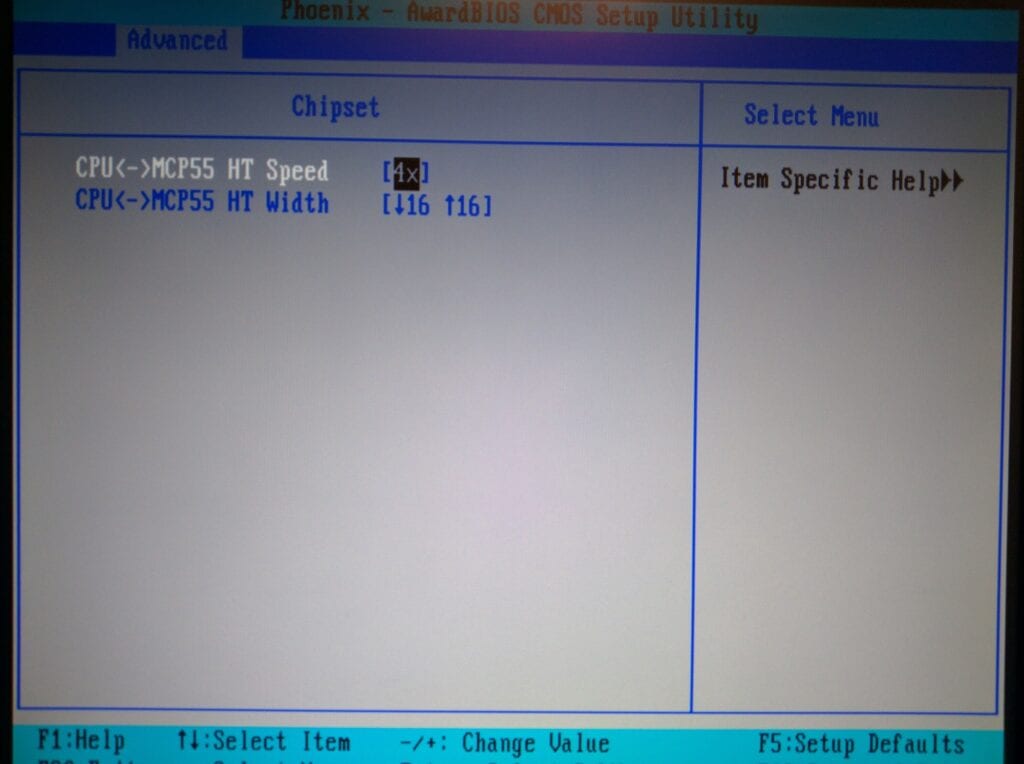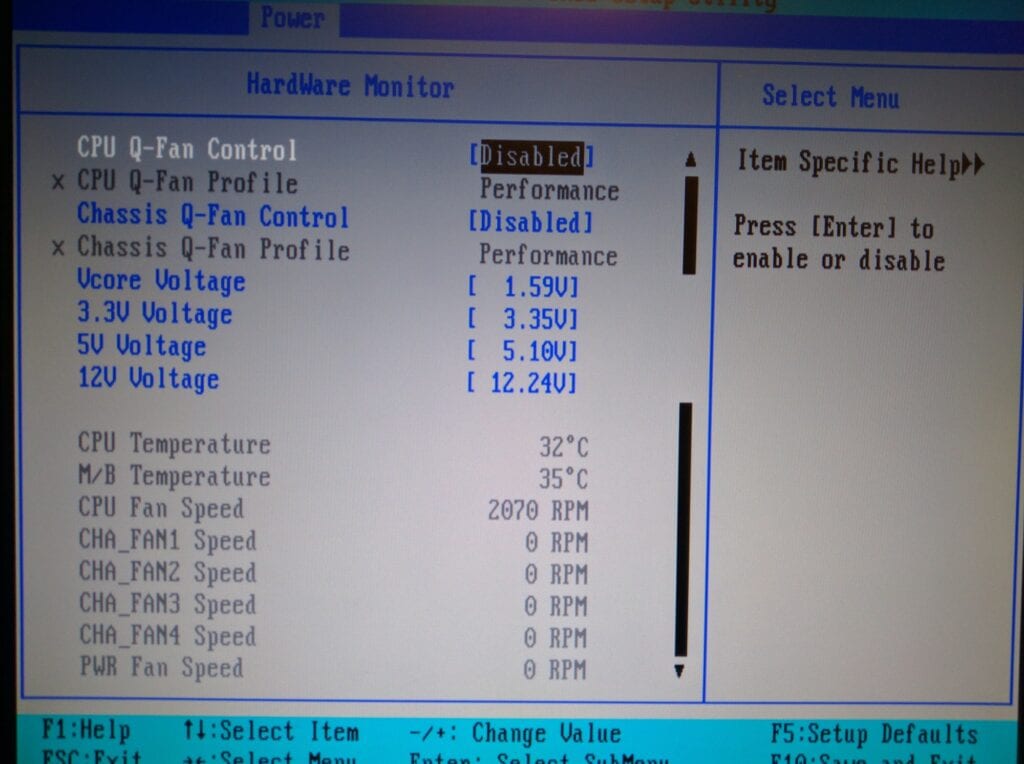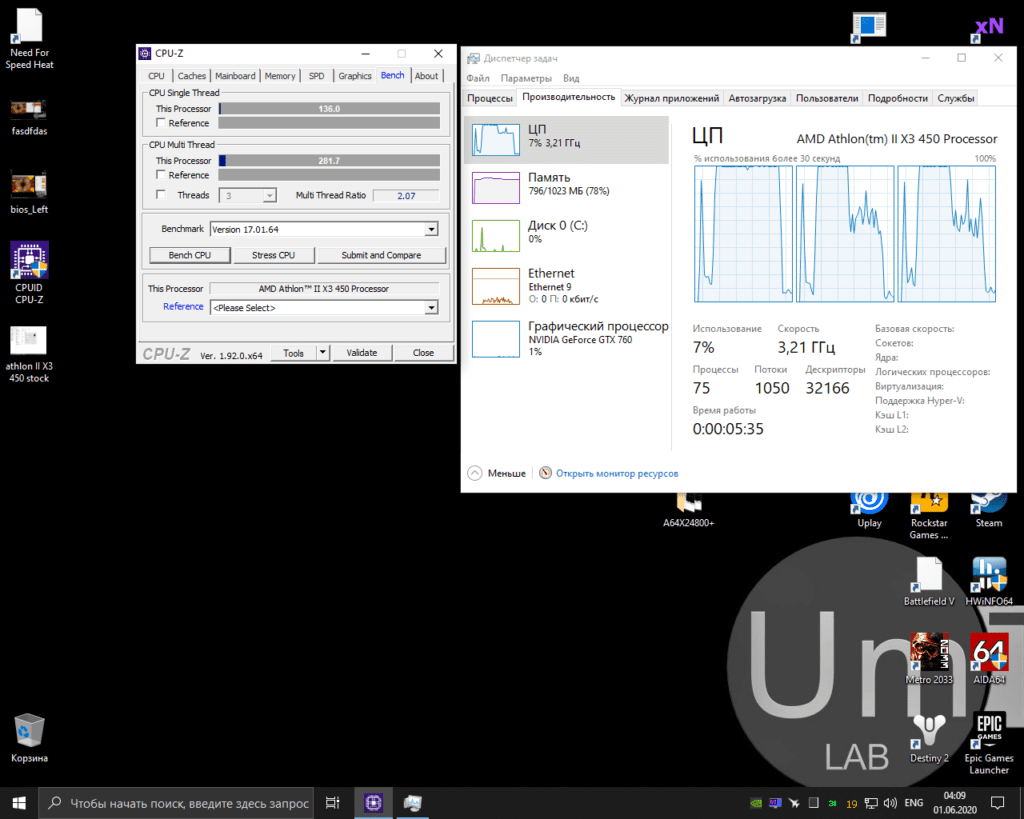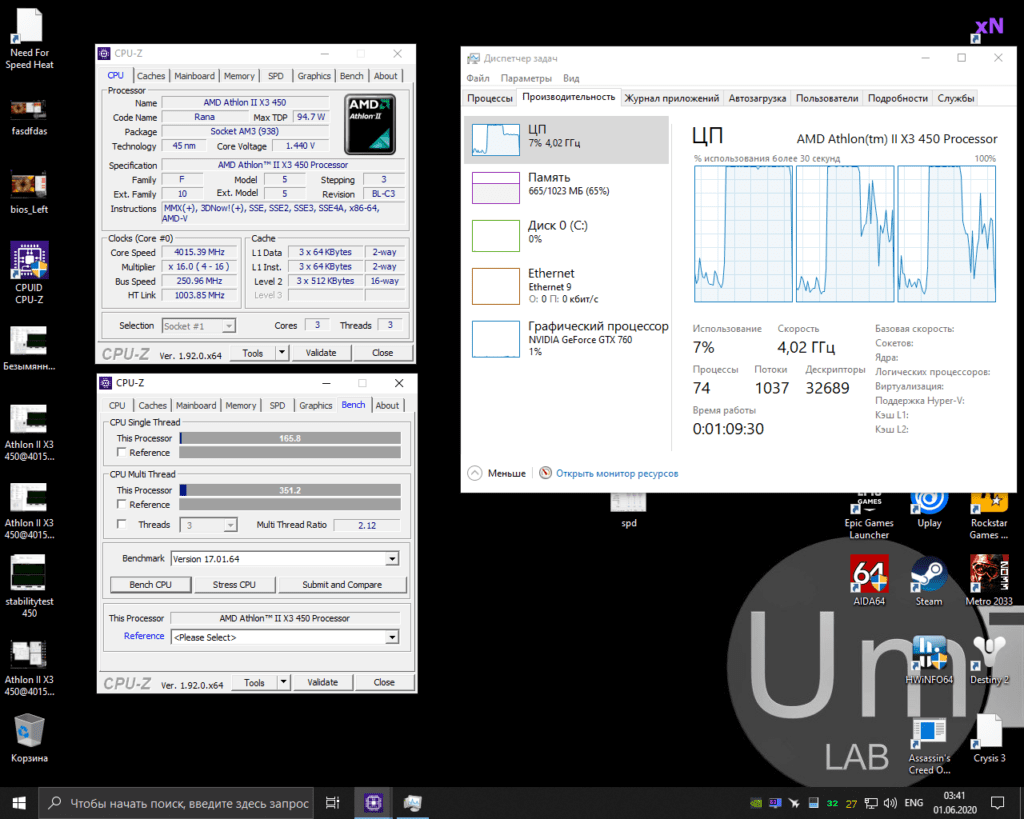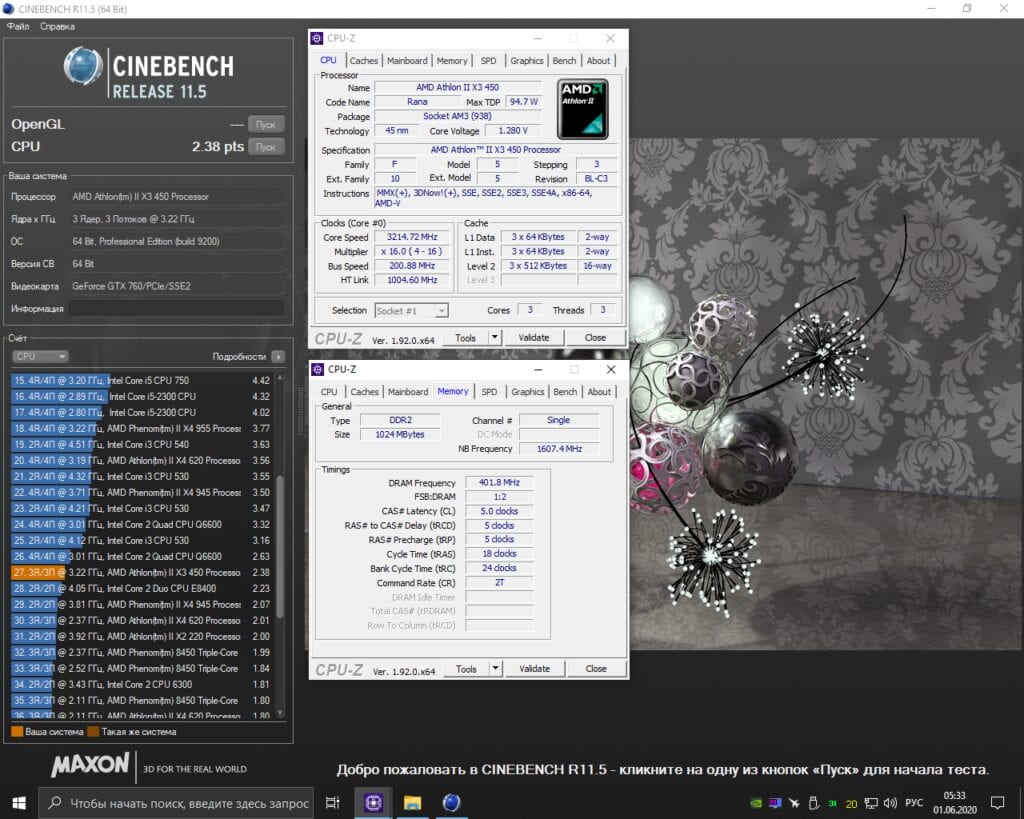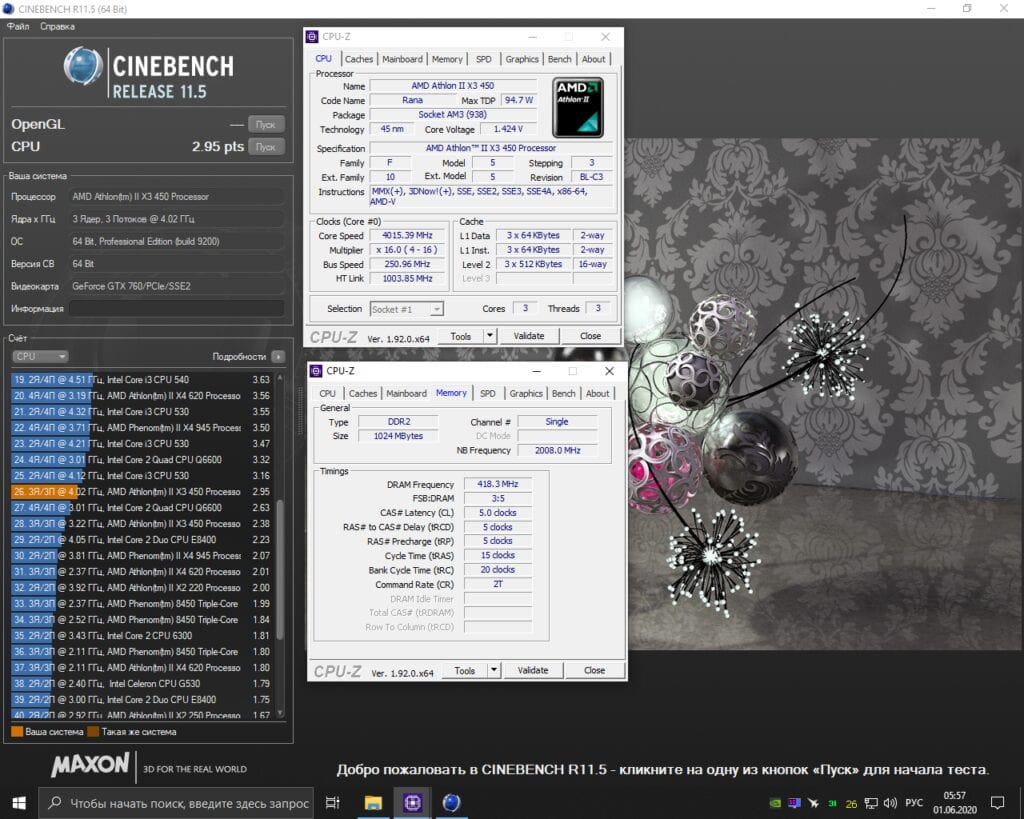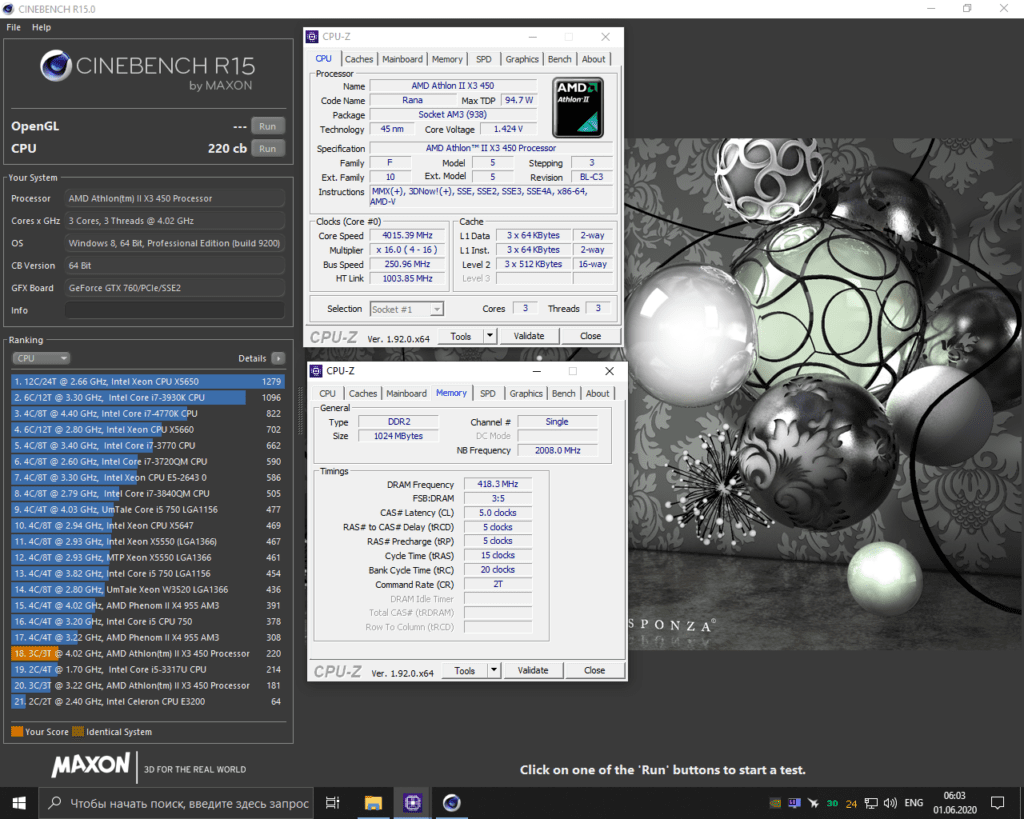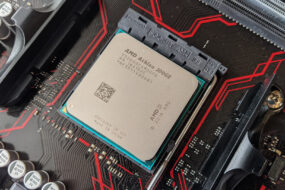
As I promised in my blog about overclocking the AMD Athlon 64 X2 4800+ chip, you will find a whole series of articles about Retro Overclocking of the CPU for the AM2 + platform. And considering that the package with a “handful of chips” finally came to me, I’m ready to tell you about overclocking the next CPU.
In this article we will talk about the not the most popular 3-core processor of its generation Athlon II X3 450. Why not the most? The answer is quite trivial: at the outset, this chip had an extremely poor price/performance ratio and its purchase against the background of the existing Athlon II X3 425 and 435 models was not particularly expedient.
Nevertheless, even this not very successful CPU sold very well, and therefore, I think you will be interested in what will come of the Athlon II X3 450 overclocking attempt.
Just in case, let me remind you: there are not many tests here, but only a couple to clearly demonstrate the performance gain from overclocking. If you want to see the testing of this processor in games – write about it in the comments.
Processor
Test instance marking ADX450WFK32GM NADIC. The latter tells us that this is a processor belonging to the Athlon line. In other words, under the heat-distribution cover of the chip, the L3 cache is physically absent and it will not be possible to enable it even on a motherboard with the ACC function.
But the end of the first line of ADX450WFK32GM notifies the owner that he is incredibly lucky, because the chip revision is the latest and most successful – C3.
The release date of the processor is the 11th week (March) of 2010, which tells us about the relative freshness of this instance.
Looking at our chip, we can say with a high degree of probability that it was in a mining farm. Most likely somewhere in the basement, well, or at some enterprise – in general, in a damp room.
The imprint of a boxed radiator is firmly embedded in the heat distribution cover and is practically impossible to clean. Probably due to the inaccessibility to the farm, the cooling system was clogged and the processor succumbed to frequent overheating.
Again my investigations, I keep you informed friends :).
As you probably already guessed, I don’t know the true story of the Athlon II X3 450 that came to me, and I can only guess how much its overclocking potential has dropped after 10 years of operation in difficult conditions.
Screenshot of CPU-z:
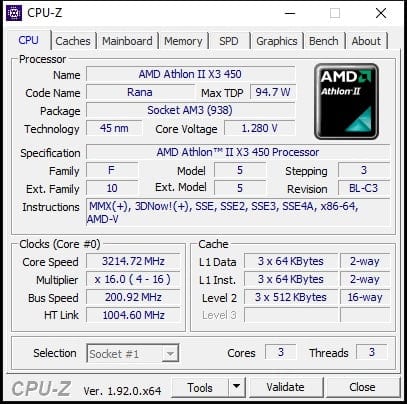
At the heart of the Athlon II X3 450 processor is a 45nm Rana crystal derived from the quad-core Propus. The chip operates at a base frequency of 3200MHz and has 512KB L2 cache per core. The power consumption of the Athlon II X3 450 is within 95 watts.
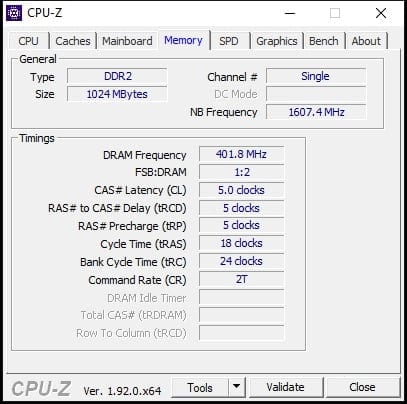
In our case, due to the limitations of the AM2+ platform, the memory controller built into the processor operates at 1600MHz, the HT bus at 1000MHz, and DDR2 memory at 800MHz.
By the way, the ASUS M2N-E board for some reason, known only to the engineers of this company, sets the stock voltage to the processor at 1.430 volts. Which is just ridiculous, because the base voltage of the Athlon II X3 450 should be 1.350 volts.
But this can be easily solved by fine-tuning the BIOS of the motherboard. I will say more, this chip works stably at a voltage of 1.300 volts, albeit only at its stock frequency of 3200 MHz.
As always, I tested the processor in the benchmark built into the CPU-z utility, and what my surprise was when it turned out that this test could not work with 3-core models:
And probably, on the one hand, it seems clear – Athlon II X3 chips have been out of date for six years now, but what the hell, seriously? A benchmark that does not know how to “non-standard” three streams …
OK, nothing serious. To assess the performance growth, we will use the services of a slightly more ponderous old, good Cinebench.
At a stock frequency of 3200 MHz in the Cinebench R11.5 and R15 benchmarks, the processor was able to score 2.38 and 181 points, respectively. Let’s see what overclocking the Athlon II X3 450 will give us.
Test setup
- Motherboard — ASUS M2N-E
- Processor — Athlon II X3 450 (rev. C3)
- CPU Cooling — Cooler Master Hyper 212 EVO
- RAM — 1GB DDR2 SK Hynix HYMP512U64CP8-S5
- Video card — ZOTAC GeForce GTX 760 AMP!
- SSD — KINGSTON 120GB SA400S37120G
- Power supply — Chieftec GPS-1250C
- Operating system – Windows 10 with latest updates for May 2020
Athlon II X3 450 overclocking
AMD did not really bother with the overclocking potential of the Propus core (the 3-core Rana core is just a culling from the 4-core Propus) and focused on the flagship Deneb. That is why seemingly similar processors show very different overclocking potential.
For example, Phenom II X4 chips at a relatively low voltage of 1.450 volts are often able to operate quite stably at frequencies of 4000-4100 MHz. While Athlon II X4 (and its culling Athlon II X3) at this voltage can only load the operating system. And believe me, even that doesn’t happen often. In the overwhelming majority of cases, after saving the settings in the BIOS, only a black screen awaits you.
But why am I talking about sad only? Rarely, I emphasize, very rarely, but it also happens that Propus can show similar overclocking results to Deneb. But you shouldn’t rely on it.
Frankly speaking, for me personally, the initial test frequency for absolutely any processors built on the 45nm K10.5 architecture is the 4000 MHz bar: If at a relatively low supply voltage of 1.450 volts, the test chip is able to at least load the operating system, the specimen is not bad. In case of failure, the CPU will often be weak and most likely will not be able to take a frequency of 4000 MHz, even at a dangerous voltage of 1.600 volts.
In our case, the Athlon II X3 450 was able to boot at 4000 MHz at 1.460 volts. Overall, I was lucky. However, as I expected, the chip could not pass even a light stress test of the CPU-z utility. It is quite obvious that for such frequency, it does not have enough core voltage. After switching to 1.530 volts Athlon II X3 450 was able to boast of half an hour stability at 4000 MHz. But after AIDA64 alerted me to the error.
To say that I was disappointed is to say nothing.
See for yourself: a voltage of 1.550 volts is the last relatively safe island and after it comes to the likelihood that the processor chip will begin to degrade.
In general, of course, to a greater extent it depends on the temperature regime in relation to the voltage. However, Athlon II chips are known for their dislike of high currents. On the Internet, you can find a description of cases when the processors failed at low temperatures, and I still have some plans for testing this chip.
It is for this reason that I decided to limit myself to a voltage of 1.574 volts (measured with a multimeter of 1.540 volts, 1.600 volts are installed in the BIOS, and VID shows nonsense at 1.420 volts). If the processor can pass the stress test on it, it will be great. If not, then I will lower the frequency to 3900 MHz and again test for stability.
But the processor pleased me and was able to complete the 1 hour pass of the stress test in AIDA64 at a frequency of 4015 MHz:
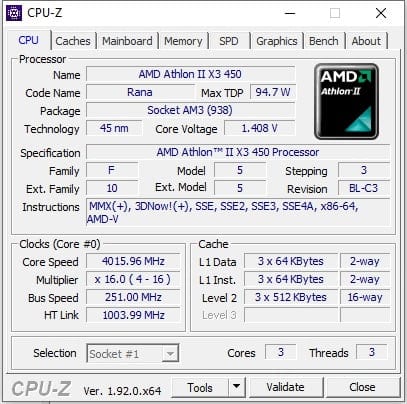
There are the BIOS settings of the ASUS M2N-E motherboard for this overclocking below:
I would like to note that the stock cooling will no longer cope with such a chip frequency, especially at a voltage of 1.5 volts. At least, you will need to install something like the Cooler Master Hyper TX3, or the test Cooler Master Hyper 212 EVO (Chinese counterparts like Snowman are also suitable).
In addition, do not forget that with such settings, the chip consumed well over 150 watts, and therefore take care of cooling the motherboard power circuits. For example, in my case, I had to install a 120mm fan to blow the heat sink of the power transistors.
Finally, remember the power supply requirements. For such overclocking, a high-quality power supply unit for 500-700 watts should be enough (of course, you need to take into account the “gluttony” of the video card. If you have any R9 290X, then you better have something more powerful than high-quality 500 watts, otherwise, it will not work).
It’s time to compare the test results in stock and overclocking:
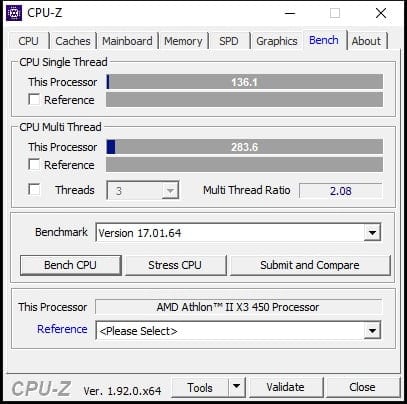
Athlon II X3 450@3200MHz 
Athlon II X3 450@4000MHz
It was 2.38 points, and now 2.95 points in Cinebench R11.5.
It was 181 points, now 220 points in Cinebench R15.
Conclusion
4000MHz have been reached, which means the bench session was successful. In addition, the results of a few tests are also pretty good this time, even taking into account 2020.
The Athlon II X3 450 chip is quite capable of providing an undemanding user with everything they need: watching videos on YouTube in FullHD, simple games, as well as relatively comfortable surfing the Internet without a lot of tabs.
It is likely that after the motherboard with the AM3+ socket arrives at the laboratory, I will once again take up overclocking this processor. But in this case, most likely, there will also be full-fledged testing in games and applications.
See you in the next article and happy overclocking!
